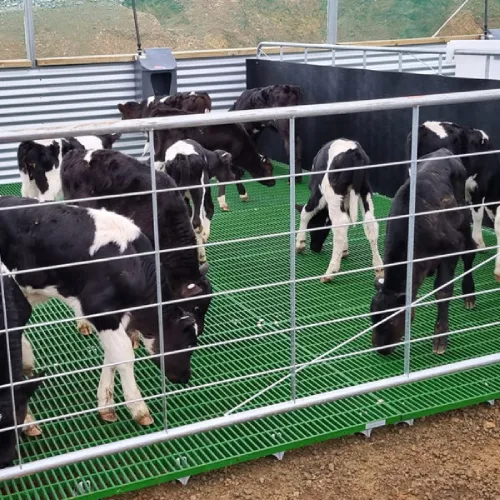loading...
- No. 9, Xingyuan South Street, Dongwaihuan Road, Zaoqiang County, Hengshui, Hebei, China
- admin@zjcomposites.com
- +86 15097380338
- Welcome to visit our website!
Innovative Designs for Open Steel Floor Grating Solutions in Industrial Applications and Construction Projects
Exploring Open Steel Floor Grating Structure, Benefits, and Applications
Open steel floor grating is an essential industrial component known for its durability, versatility, and safety features. Made from various types of steel, the grating is designed to allow ventilation, light, and drainage while providing a sturdy walking surface. This article explores the fundamental aspects of open steel floor grating, including its structure, benefits, and applications across different industries.
Structure of Open Steel Floor Grating
Open steel floor grating typically consists of a grid-like framework made from parallel bars that are load-bearing and transverse bars that enhance stability. The arrangement of these bars can vary, with different patterns such as welded, press-locked, or swaged constructions offering distinct performance characteristics. The most common type of material used in the production of steel grating is carbon steel, although stainless steel and aluminum variations are also available, catering to specific needs based on environmental factors like corrosion resistance and weight.
Manufacturers can customize steel floor grating in various sizes and load-bearing capacities, which allows for flexibility in design and application. The open design facilitates drainage and airflow, making it ideal for locations that might experience spills or require ventilation.
Benefits of Open Steel Floor Grating
1. Durability and Strength Steel, as a construction material, is renowned for its strength. Open steel floor grating can withstand heavy loads, making it suitable for industrial environments such as manufacturing plants, shipyards, and construction sites.
2. Safety Features The grid design allows for good traction underfoot, reducing the risk of slips and falls. Additionally, the open slots can help prevent the accumulation of water and debris, further enhancing workplace safety.
open steel floor grating

4. Cost-Effectiveness The manufacturing process of open steel floor grating is often less expensive than that of solid flooring options. Additionally, its durability leads to lower maintenance costs over time.
5. Versatile Application Open steel floor grating can be utilized in a variety of settings, from industrial sites to commercial buildings. Its ability to support heavy machinery, employees, and equipment makes it an invaluable asset in numerous industries.
Applications of Open Steel Floor Grating
The versatility of open steel floor grating makes it ideal for a wide range of applications. In the construction sector, it is commonly used for walkways, platforms, mezzanines, and catwalks. Its lightweight design ensures easy installation, while its ability to withstand heavy loads makes it a preferred choice for high-traffic areas.
In chemical and oil industries, the non-slip surface and drainage capabilities of steel grating are crucial for minimizing hazards associated with spills and leaks. It is also widely used in wastewater treatment facilities and refineries, where durability and resistance to chemicals are vital.
Moreover, open steel floor grating finds applications in the hospitality and retail sectors, where it can be used for decorative flooring, especially in outdoor spaces such as patios and balconies. Its aesthetic appeal, combined with functionality, makes it a popular choice for enhancing outdoor dining areas and other public spaces.
Conclusion
Open steel floor grating represents a critical investment for various industries seeking durable, safe, and cost-effective flooring solutions. Its unique structure allows for the seamless integration of safety, practicality, and aesthetic appeal, making it an indispensable component in numerous applications. As industries continue to evolve, the demand for open steel floor grating is likely to grow, reinforcing its position as a mainstay in modern construction and design.
-
GRP Structures: The Future of Lightweight, High-Performance EngineeringNewsJun.20,2025
-
FRP Water Tank: High-Performance Storage for Corrosive and Clean Water SystemsNewsJun.20,2025
-
FRP Square Tube: The New Industry Standard for Chemical and Structural ApplicationsNewsJun.20,2025
-
FRP Pultruded Profiles: The Ultimate Choice for Lightweight Structural StrengthNewsJun.20,2025
-
FRP Handrails: The Safer, Smarter, and Stronger Choice for Modern InfrastructureNewsJun.20,2025
-
FRP Grating: The Smart Solution for Durable, Lightweight Industrial FlooringNewsJun.20,2025
-
Why Choose a Galvanized Water Tank for Your Storage NeedsNewsMay.21,2025
